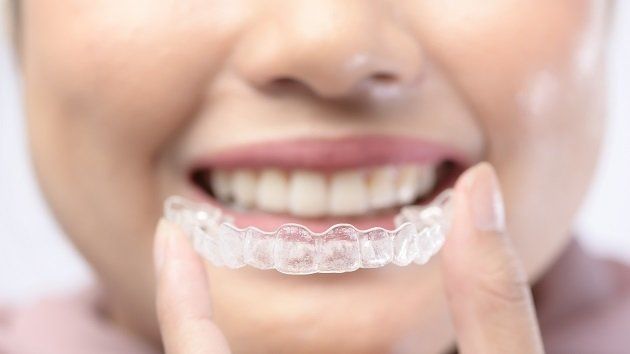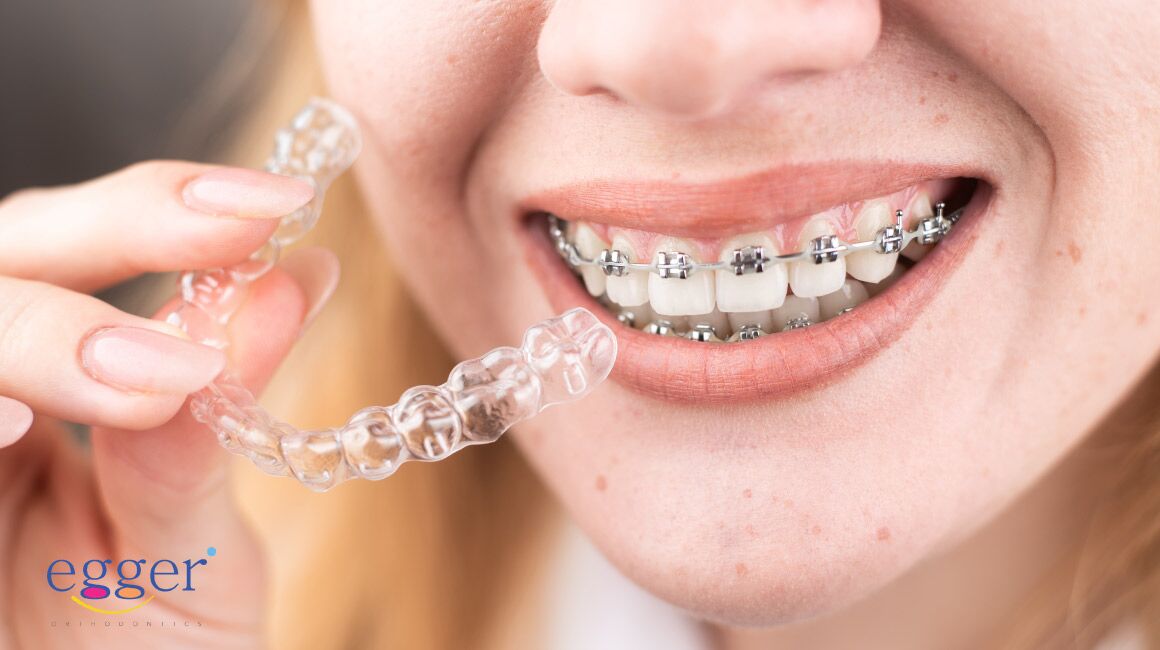Invisalign for Teens: A Modern Solution to Straightening Young Smiles
Invisalign for Teens: A Modern Solution to Straightening Young Smiles
Blog Article
Invisalign vs. Standard Braces: Which Option Is Right for You?
When thinking about orthodontic treatment, the choice in between Invisalign and standard dental braces offers numerous important elements that warrant mindful evaluation. Invisalign uses a very discreet alternative with detachable aligners, while standard braces provide a more noticeable yet reliable option for severe imbalance. Each alternative encompasses unique advantages and disadvantages connected to visual appeals, convenience, treatment period, and price. Comprehending these nuances is crucial for making an educated decision that aligns with your individual choices and way of life. The question remains: which alternative will ideal fulfill your orthodontic demands and expectations?
Review of Treatment Alternatives

On the other hand, standard braces contain metal brackets and cords that are bound to the teeth. This method uses constant stress in time to attain placement. While reliable for complicated orthodontic problems, traditional braces call for routine check outs for modifications and can position challenges in keeping dental health due to the problem of cleansing about wires and braces.
Both options have their merits, and the selection usually pivots on details oral conditions, way of life preferences, and patient conformity. Eventually, seeking advice from an orthodontic specialist is essential for determining one of the most appropriate therapy plan customized to individual demands. Understanding the nuances of each option can significantly influence the total success of orthodontic treatment.
Visual Considerations
A substantial element influencing the choice in between Invisalign and standard dental braces is the aesthetic allure each therapy supplies. Invisalign aligners are crafted from clear plastic, making them practically undetectable when put on. This discreet appearance is particularly appealing to young adults and adults that may feel awkward about their orthodontic treatment. The ability to keep an all-natural smile throughout the alignment process can dramatically boost the person's confidence in social and expert settings.
In comparison, typical dental braces contain metal brackets and cables, which can be much more visible. While innovations in orthodontic modern technology have actually led to the development of smaller braces and colored elastics, typical dental braces still keep a more conspicuous account. For some individuals, the exposure of dental braces might hinder them from seeking needed therapy.
Inevitably, the selection between Invisalign and standard braces may depend upon individual choices concerning looks. Patients who prioritize discernment frequently favor Invisalign, while those that are less concerned about visibility may go with standard braces. Recognizing the aesthetic effects of each choice is critical for making an informed choice that aligns with one's way of life and choices.
Comfort and Convenience

In regards to benefit, Invisalign aligners are detachable, making it possible for people to enjoy their preferred foods without constraint and keep optimum oral hygiene. Cleaning and flossing are streamlined, as the aligners can be obtained during these routines, whereas standard braces call for cautious steering around braces and cables.
In comparison, conventional dental braces demand regular changes, making them much less hassle-free for those with active timetables. Overall, the convenience and comfort of Invisalign make it an attractive selection for several individuals seeking orthodontic therapy.
Treatment Duration and Efficiency
While both Invisalign and typical braces work in fixing oral imbalances, the period of therapy can differ dramatically in between both options. Typically, Invisalign go to my blog therapy can take anywhere from 12 to 18 months, relying on the intricacy of the case. The clear aligners function by progressively shifting teeth into their desired settings, and regular follow-ups with an orthodontist help guarantee development continues to be on the right track.
In comparison, conventional dental braces often call for a longer dedication, usually ranging from 18 months to 3 years. This results from their fixed nature and using cords and braces, which can be a lot more reliable for complicated situations and severe imbalances (Invisalign). The therapy efficiency of standard braces is well-documented, as they enable exact modifications and greater control over tooth activity
Ultimately, the choice between Invisalign and typical dental braces might rest on both the anticipated treatment duration and the certain oral issues handy. Consulting with an orthodontist is crucial, as they can supply customized recommendations based upon individual requirements, ensuring the picked approach lines up with desired durations and outcomes.
Expense Contrast and Insurance Coverage Choices
Cost plays a substantial duty in the decision-making procedure for individuals taking into consideration orthodontic therapy, whether selecting Invisalign or traditional braces. Usually, the cost of Invisalign arrays from $3,000 to $8,000, while traditional dental braces usually set you back between $2,000 and $6,000. Aspects influencing these expenses consist of the complexity of the situation, the duration of therapy, and geographical area.
Insurance coverage can significantly impact out-of-pocket costs. Numerous dental insurance coverage plans provide partial protection for orthodontic therapies, yet the read what he said specifics can vary commonly. It is important for clients to examine their insurance plan to establish the degree of coverage for either option. Normally, standard braces might be a lot more often covered by insurance policy plans compared to Invisalign, which some insurers classify as an aesthetic treatment.
In addition, numerous blog orthodontic practices offer flexible layaway plan, making both treatment alternatives much more obtainable. Individuals need to ask about possible financing alternatives and price cuts for in advance payments. Examining the overall price, including insurance coverage benefits and repayment plans, is necessary for making a notified choice that straightens with both aesthetic preferences and budget factors to consider.

Verdict
In summary, the selection in between Invisalign and typical braces pivots on several variables, consisting of visual preferences, convenience, therapy period, and cost. Invisalign supplies a discreet, removable alternative that facilitates dental hygiene and nutritional adaptability, while standard braces may be preferable for intricate oral concerns and often come with a lower rate point. Inevitably, assessment with an orthodontist is important to assess individual conditions and establish one of the most appropriate therapy choice for accomplishing ideal dental alignment.
When thinking about orthodontic treatment, the choice between Invisalign and typical braces offers a number of essential variables that warrant careful assessment.Contrasting Invisalign and conventional braces exposes distinctive treatment alternatives for orthodontic adjustment.While both Invisalign and traditional braces are efficient in correcting oral misalignments, the duration of therapy can differ considerably between the 2 options.Price plays a significant duty in the decision-making procedure for people thinking about orthodontic therapy, whether choosing for Invisalign or conventional braces.In recap, the selection between Invisalign and conventional dental braces hinges on numerous variables, including aesthetic choices, comfort, treatment duration, and price.
Report this page